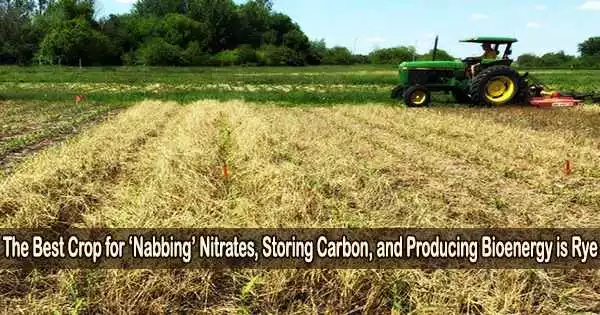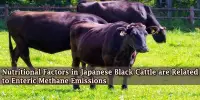Rye is a type of grain that belongs to the wheat family. It’s commonly grown for its use in various food products and beverages. Winter rye is prized for its versatility. A source of grain and also a forage and ground cover protects the soil from erosion by wind and rain. But the benefits of winter rye don’t stop there.
A group of researchers from the Agricultural Research Service (ARS) and universities hypothesized in 2015 that planting winter rye as a cover crop between corn and soybean rotations might reduce nitrate losses, trap carbon, and produce sustainable natural gas.
Robert Malone, an agricultural engineer at the ARS National Laboratory for Agriculture and the Environment in Ames, Iowa, is in charge of coordinating the studies to assess rye’s potential contribution to “sustainable intensification of agriculture,” which is viewed as essential to meeting the rising demand for food, feed, fiber, and fuel around the world without placing an undue burden on the available land and natural resources.
In the latest studies, the team used a field-scale computer model to simulate rotations of corn and soybean, with or without winter rye cover crops, at 40 sites across the North Central United States, including parts of the Mississippi River Basin, which empties into the Gulf of Mexico.
The use of cover crops such as winter rye in corn-soybean rotations in the North-Central U.S. is one of the most promising conservation strategies for reducing nitrate loads to streams and rivers that discharge into the Mississippi River.
Robert Malone
Among results recently published in the journal of Environmental Research Letters:
In tile-drained fields (those using a network of underground drainage pipes to remove excess water), planting a winter rye cover crop in between corn-soybean rotations reduced nitrate levels in drainage water by more than 45% in comparison to rye-free fields, or about 21 and 44 kilograms per hectare, respectively.
The use of winter rye cover crops on tile-drained fields resulted in a 27% decrease in nitrate loads entering the Gulf of Mexico via the Mississippi River basin over the 63 total million hectares (or roughly 156 million acres) of North Central farmland that the model’s simulations covered.
When nitrate is not utilised by crop plants and leaks into streams, rivers, lakes, and other bodies of surface water, it poses a threat to the environment by lowering water quality and promoting algal blooms. Fish and other aquatic life are either killed or driven away as a result of the following decomposition and death of the algae in these blooms.
This situation, known as hypoxia, occurs in coastal areas like the Gulf of Mexico and forms a “dead zone” that is several thousand square miles in size. This magnitude can have a significant negative impact on commercial fishing and other related sectors. This summer, for example, the Gulf’s dead zone is forecasted to cover 4,155 square miles.
“A variety of factors including the effects of excess nutrients and water-body stratification (layering) due to saline or temperature gradients can create hypoxic conditions. In North America, the size of the hypoxic area in the Gulf of Mexico correlates strongly with spring nitrate-nitrogen loads from the Mississippi River,” explained Malone, who collaborates on the modeling studies with 15 other researchers from three ARS laboratories and four universities.
Climate-change may increase the likelihood of hypoxic conditions in the Gulf of Mexico, lending urgency to U.S. Environmental Protection Agency task force efforts to reduce nitrogen and phosphorous loads from the Mississippi River basin by 45% by 2035.
“The use of cover crops such as winter rye in corn-soybean rotations in the North-Central U.S. is one of the most promising conservation strategies for reducing nitrate loads to streams and rivers that discharge into the Mississippi River,” according to Malone.
In addition to curbing nitrate losses, winter rye cover crops may also have a role to play in capturing (or, “sequestering”) carbon.
The model’s simulations show that planting winter rye cover crops in corn-soybean rotations could result in the production of more than 18 million metric tons (19.8 million tons) of “biomass” (also known as field residue).
If used to create bio-methane gas using anaerobic digesters, the rye residue has the potential to produce 210 million megajoules of energy each year, or the energy content of 2.3 billion gallons of ethanol.
The simulations also show that a typical filtration step called “upgrading” in the bio-methane production process may be able to remove and capture 7.5 million tons (8.3 million tons) of carbon dioxide annually, preventing its release into the atmosphere when the biogas is burned for power or heat and providing farmers with a benefit from carbon sequestration.
Winter rye cover crops are not, according to the researchers, the conventional “magic bullet” for handling nitrogen and enhancing the environment. In contrast, it is more likely to be combined with other strategies, such as the use of saturated riparian buffers, controlled drainage, wetlands, and bioreactors.
“Combined conservation practices such as winter rye cover crops and edge-of-field practices like using the saturated buffers are sometimes called ‘stacked practices,’ and they may reduce nitrogen loss more than when each practice is used individually,” said Malone.
















